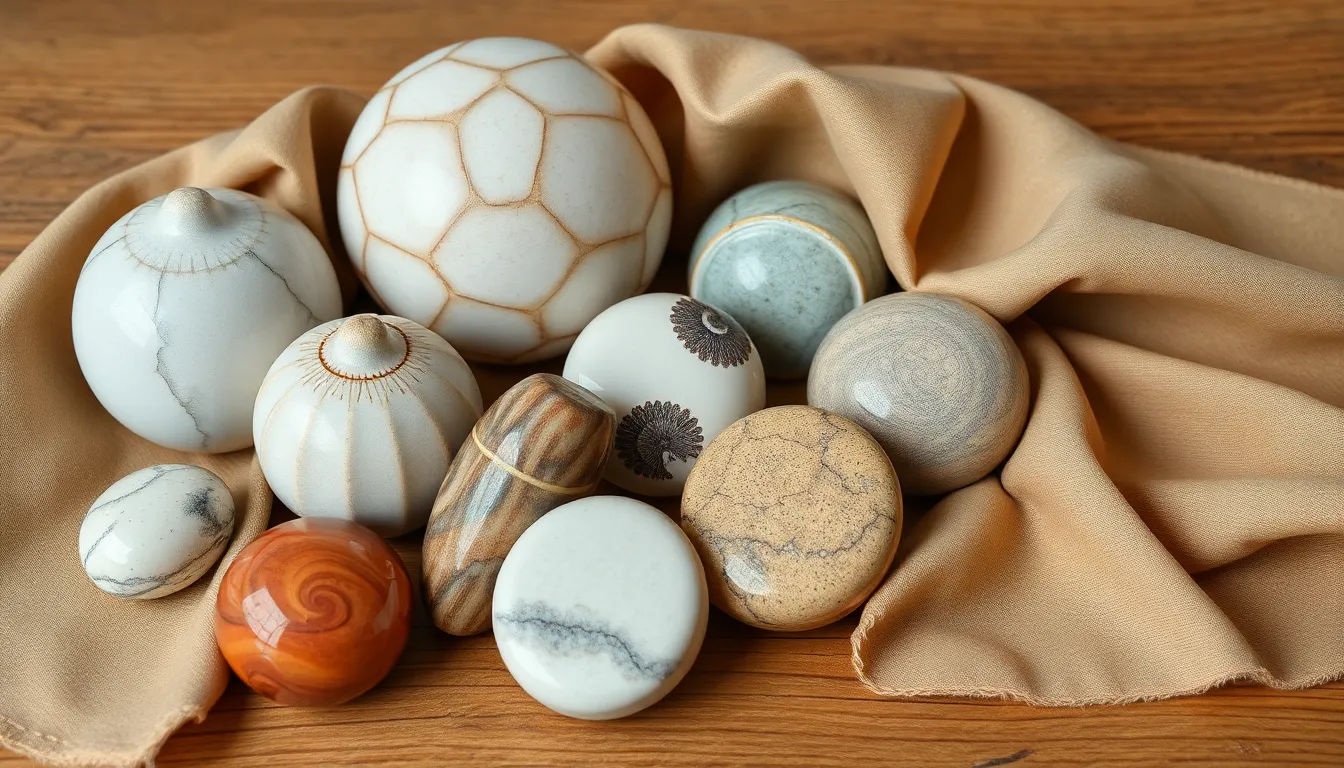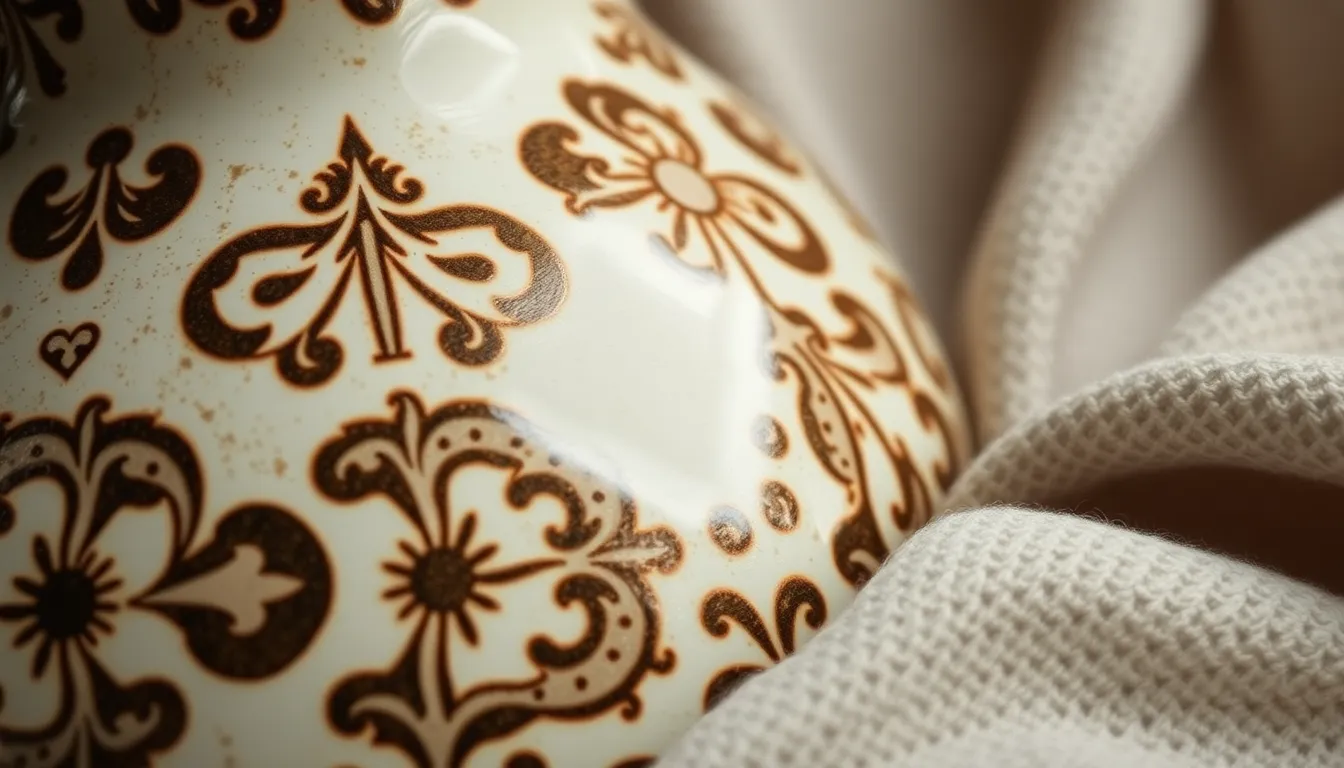Table of Contents
ToggleFlensutenol texture might sound like a fancy dish at a five-star restaurant, but it’s actually a game-changer in the world of materials and design. Imagine a texture so captivating it could make even the most mundane object feel like a luxury item. That’s the magic of flensutenol. It’s not just about looks; it’s about how it feels in your hands and how it transforms everyday experiences.
Understanding Flensutenol Texture
Flensutenol texture captures attention through its distinct attributes. This texture enhances the sensory experience by adding depth and richness to materials. Designers often select flensutenol for its ability to evoke feelings of luxury in everyday items. Its unique properties contribute to a more engaging interaction with objects.
Surfaces with flensutenol texture often exhibit an intricate finish. This finish encourages tactile exploration, inviting users to touch and engage more deeply. Manufacturers benefit from incorporating flensutenol, as it elevates the perceived quality of their products. Consumers appreciate the comfort and satisfaction gained from interacting with items that feature this texture.
Furthermore, flensutenol texture can vary across applications. In textiles, it provides a soft, inviting feel, while in ceramics, it offers a glossy, sophisticated finish. Each application showcases the versatility of flensutenol, making it a popular choice among creators aiming for high aesthetics.
Elevating material design requires understanding the implications of texture. The decision to use flensutenol not only changes the visual appeal but also enhances the user’s experience. Considerations include the intended audience and the desired emotional response derived from touch.
Integrating flensutenol in product design yields a compelling outcome. It transforms ordinary objects into extraordinary experiences by emphasizing the interaction between the user and the material. Such enhancements lead to increased customer satisfaction and brand loyalty, positioning flensutenol as a valuable asset in design innovation.
Characteristics of Flensutenol Texture



Flensutenol texture showcases unique characteristics that captivate both designers and users alike. A blend of visual appeal and tactile experience defines its essence.
Appearance and Consistency
Flensutenol appears with distinctive patterns that enhance the aesthetic of various surfaces. Glossy finishes emerge in ceramics while soft textures become prominent in textiles. Smoothness contributes to a luxurious look and feel, captivating attention immediately. Variations in patterns often occur, allowing customization according to product needs. Designers appreciate how these patterns lend depth and richness, emphasizing the quality of materials. Its consistency across applications makes flensutenol a reliable choice for those seeking elegance in design.
Sensory Aspects
Sensory experiences gain a new dimension through flensutenol. Touch invites exploration, prompting users to engage with the product on a deeper level. The soft feel of textiles often contrasts with the slickness of ceramics, creating varied tactile responses. Texture plays a crucial role in evoking emotions, enhancing attractiveness and satisfaction. Users frequently associate flensutenol’s sensory qualities with luxury, influencing overall perceptions. Enhanced tactile interactions foster memorable experiences, making flensutenol an integral element in product design.
Applications of Flensutenol Texture
Flensutenol texture finds diverse applications across various industries. Its unique properties enhance both function and consumer experience.
In Food Products
Flensutenol enhances the sensory experience in food products. This texture creates a visually appealing surface that attracts consumers. Textured food packaging often showcases flensutenol, improving user interaction. This application emphasizes freshness and quality while also providing a unique tactile sensation when touching packaging. Various food items, such as gourmet chocolates and artisanal cheeses, benefit from this enhanced visual and tactile experience. Brands recognize that using flensutenol contributes to a stronger emotional connection with their offerings. Successful marketing frequently highlights the unique texture as a selling point, influencing consumer preferences.
In Cosmetic Formulations
Flensutenol texture plays a vital role in cosmetic formulations. It adds a luxurious feel to beauty products, enhancing the overall user experience. Many skincare and makeup products feature flensutenol, resulting in smooth application and pleasing tactile feedback. The inclusion of this texture also appeals to consumers seeking products that evoke a sense of indulgence. High-end lotions and serums often leverage flensutenol to enhance their sensory profile. Brands report increased customer satisfaction and loyalty, as the texture amplifies perceived value and quality. Users tend to appreciate the sophisticated experience provided by flensutenol, driving positive consumer behavior.
Comparison with Other Textures
Flensutenol stands out when compared to traditional textures like matte or rough surfaces. Designers appreciate its smooth touch and elegant finish, which contrasts sharply with the harsh sensations of more abrasive textures. While matte textures often absorb light, flensutenol reflects it, enhancing visual appeal.
Additionally, soft fabrics such as velvet provide comfort, but flensutenol offers a unique tactile experience that is pleasing and engaging. Natural wood textures display warmth, yet flensutenol infuses a modern elegance that elevates everyday objects. Users notice how flensutenol’s intricate patterns add depth unlike simpler, plain surfaces.
Ceramic materials show glossy finishes, but flensutenol enhances this with its distinctively luxurious feel. Tactile interactions with flensutenol evoke emotional responses, a quality that rough or basic textures cannot achieve. Textured metals may present rugged aesthetics, yet flensutenol appeals to those seeking sophistication in design.
When integrating flensutenol into products, designers achieve a level of refinement that resonates with consumers. Other textures may not evoke the same sense of luxury or encourage the same engagement. It brings a unique quality that transforms standard materials into immersive experiences, reinforcing its value in design innovation.
Flensutenol exceeds traditional textures by combining visual appeal and a luxurious tactile experience. The distinct characteristics allows it to enhance user interactions in diverse applications. Comparatively, its versatile nature offers a fresh alternative to conventional textures, making it a top choice for designers aiming for elegance.
Flensutenol stands out as a transformative texture that elevates both aesthetics and tactile experiences. Its ability to evoke luxury and engage users makes it a sought-after choice for designers across various industries. By integrating flensutenol, products not only gain visual appeal but also foster emotional connections with consumers.
The diverse applications of flensutenol—from textiles to ceramics—showcase its versatility and effectiveness in enhancing perceived quality. This unique texture invites exploration and interaction, making everyday objects feel extraordinary. As designers continue to embrace flensutenol, it’s clear that this innovative texture will remain a key player in the pursuit of elegance and user satisfaction.




